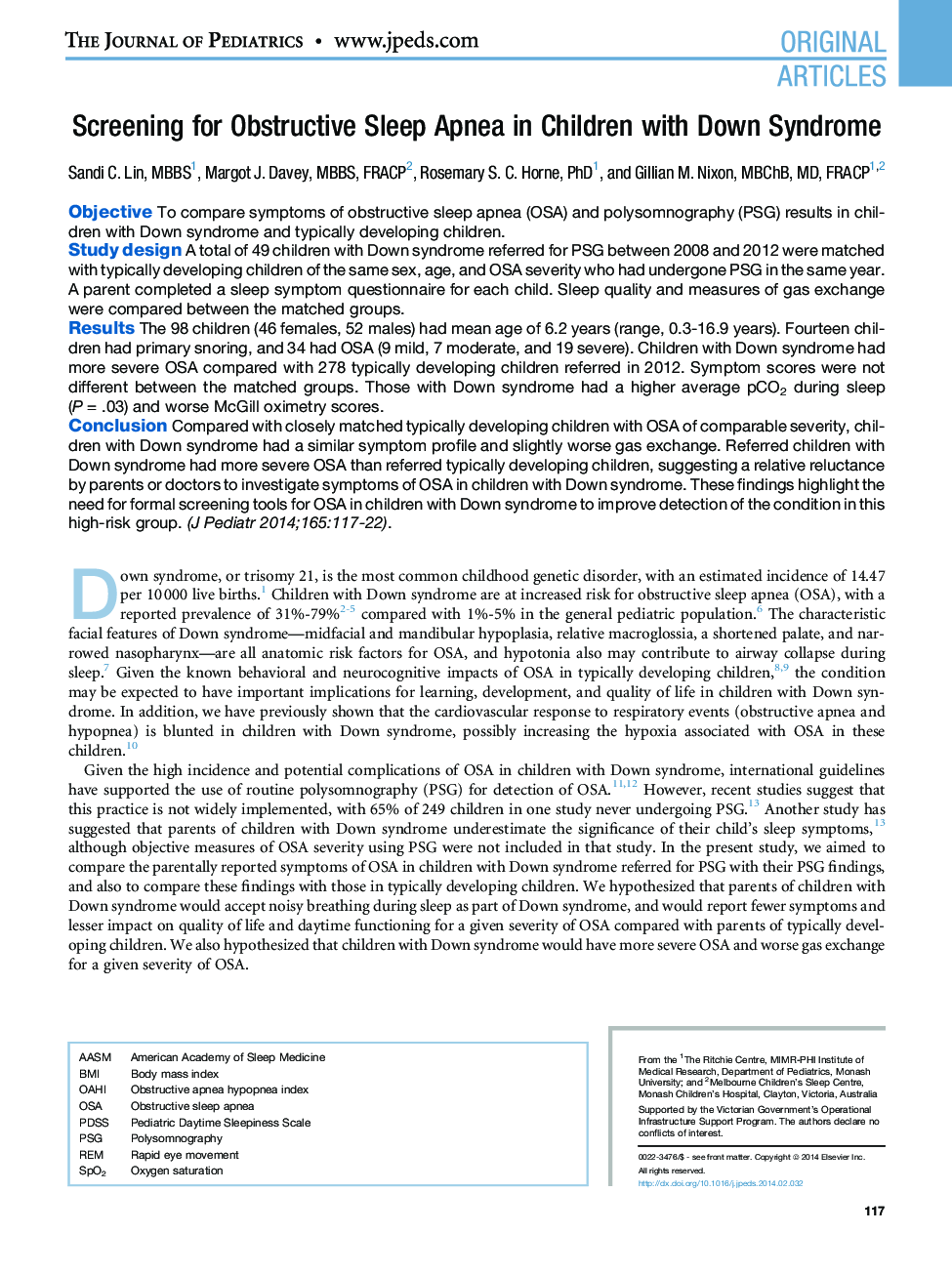| Article ID | Journal | Published Year | Pages | File Type |
|---|---|---|---|---|
| 4164878 | The Journal of Pediatrics | 2014 | 6 Pages |
ObjectiveTo compare symptoms of obstructive sleep apnea (OSA) and polysomnography (PSG) results in children with Down syndrome and typically developing children.Study designA total of 49 children with Down syndrome referred for PSG between 2008 and 2012 were matched with typically developing children of the same sex, age, and OSA severity who had undergone PSG in the same year. A parent completed a sleep symptom questionnaire for each child. Sleep quality and measures of gas exchange were compared between the matched groups.ResultsThe 98 children (46 females, 52 males) had mean age of 6.2 years (range, 0.3-16.9 years). Fourteen children had primary snoring, and 34 had OSA (9 mild, 7 moderate, and 19 severe). Children with Down syndrome had more severe OSA compared with 278 typically developing children referred in 2012. Symptom scores were not different between the matched groups. Those with Down syndrome had a higher average pCO2 during sleep (P = .03) and worse McGill oximetry scores.ConclusionCompared with closely matched typically developing children with OSA of comparable severity, children with Down syndrome had a similar symptom profile and slightly worse gas exchange. Referred children with Down syndrome had more severe OSA than referred typically developing children, suggesting a relative reluctance by parents or doctors to investigate symptoms of OSA in children with Down syndrome. These findings highlight the need for formal screening tools for OSA in children with Down syndrome to improve detection of the condition in this high-risk group.
